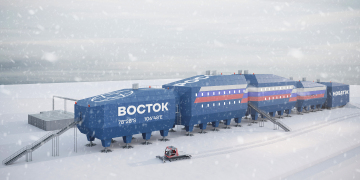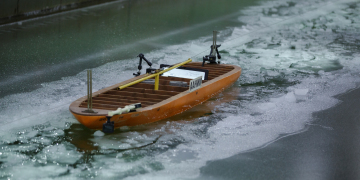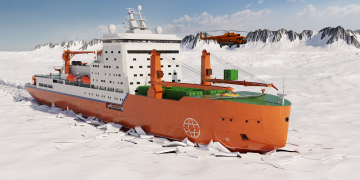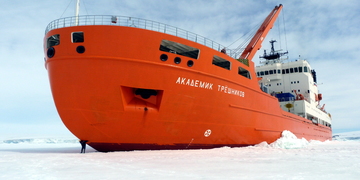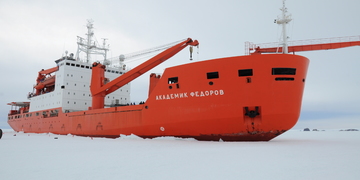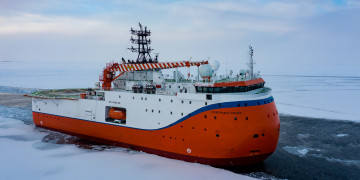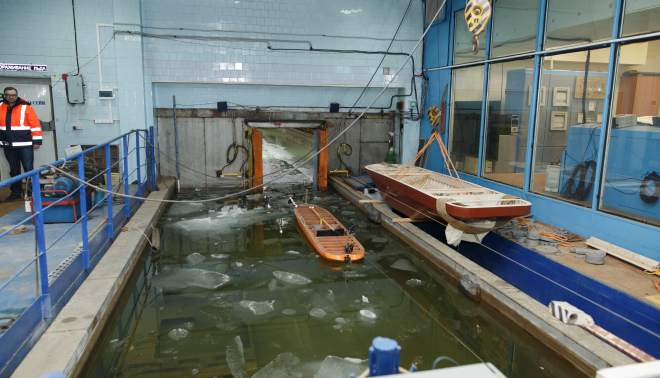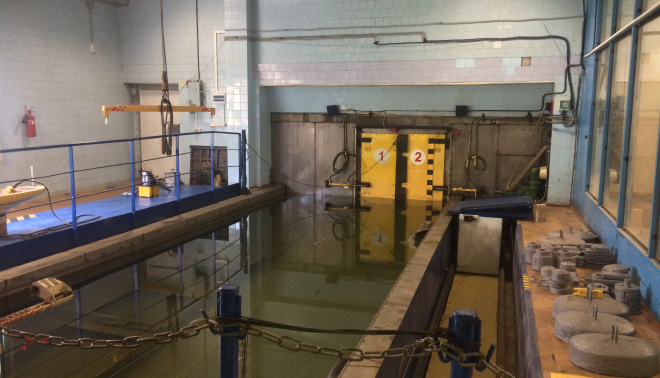Ice experemental pool
The world's first ice experimental pool, equipped with special devices for conducting model tests.
The pool was put into operation at the Arctic Research Institute in 1955. It was located on the first floor of the Gallery Wing of the Sheremetev Palace, where the Ice Research Laboratory was set up, consisting of four refrigerated chambers, an engine room, an equipment room and auxiliary service rooms. The pool was a reinforced concrete bowl 14 m long, 2m wide and 2m high. The working depth of water in the pool ranged from 1.5 to 1.7 m. The temperature conditions in the chamber made it possible to build up ice 4-5 mm thick in the pool within 3-4 hours.
For the experiments, a technique was developed for freezing simulated ice, the strength properties of which decreased compared to the properties of sea ice in proportion to the experiment scale.
The world's first nuclear-powered icebreaker "Lenin", nuclear-powered icebreakers of the "Arktika" type and many ice-going vessels of domestic and foreign projects were successfully tested in the pool.
CHARACTERISTICS OF THE ICE POOL
| Length: 30 m | 30 m |
| Width: | 5 m |
| Depth: | 1.8 m |
| Ice thickness [modeled ice]: | up to 60 mm |
| Ice thickness [natural ice]: | up to 0.5 m |
| Temperature: | up to -18°С |
| Start of operation: | 1990 |
Now the Arctic and Antarctic Research Institute (on Bering Street, 38) has two pools, the largest of which is 30.5 m long, 5 m wide and 1.8 m deep. It provides the ability to quickly change the salinity of the water and control the strength characteristics of the frozen ice. To conduct research in the pool, simulated ice up to 60 cm thick is made.
In the ice experimental pool, processes and scenarios of the ice cover destruction during interaction with vessels and engineering structures are studied. The pool has special technical solutions in the design of the bowl, refrigeration system, water treatment system, automation of experiments to test a ship model in ice, as well as technical capabilities for studying the ice impact on stationary engineering structures.
The AARI Department of Vessel Ice Performance has developed unique methods for modeling those interaction processes. The method for simulated ice freezing is patented as the “Method and device for simulating ice cover in an experimental ice pool” Patent No. 2535398.
ADDITIONALLY
- List of measurement techniques used in conducting experimental studies at the AARI Ice Experimental Pools
- List of main equipment used in conducting experiments at the AARI Ice Experimental Pool
- List of standard works and services provided at the AARI Ice Experimental Pool
- Regulations for conducting experimental research on the basis of the AARI Ice Experimental Pools
PHOTOS
| By Arkady Zakharov, archives of the Ministry of Natural Resources |
